ACCT2101 Exam 2 Study Guide Chapters 4 – 6 complete solution correct answer key
ACCT 2101 Exam 2 Study Guide Chapters 4 – 6 complete solution correct answer key
Chapter 4
1. The periodicity assumption states that:
a. a transaction can only affect one period of time.
b. estimates should not be made if a transaction affects more than one time period.
c. adjustments to the enterprise's accounts can only be made in the time period when the business terminates its operations.
d. the economic life of a business can be divided into artificial time periods.
2. One of the accounting concepts upon which adjustments for prepayments and accruals are based is:
a. expense recognition.
b. cost.
c. monetary unit.
d. economic entity.
3. An accounting time period that is one year in length is called:
a. a fiscal year.
b. an interim period.
c. the time period assumption.
d. a reporting period.
4. Expenses are recognized when:
a. they contribute to the production of revenue.
b. they are paid.
c. they are billed by the supplier.
d. the invoice is received.
5. The revenue recognition principle dictates that revenue should be recognized in the accounting records:
a. when cash is received.
b. when it is earned.
c. at the end of the month.
d. in the period that income taxes are paid.
6. A flower shop makes a large sale for $1,000 on November 30. The customer is sent a statement on December 5 and a check is received on December 10. The flower shop follows GAAP and applies the revenue recognition principle. When is the $1,000 considered to be earned?
a. December 5
b. December 10
c. November 30
d. December 1
7. Under the cash basis of accounting:
a. Revenue is recognized when services are performed.
b. Expenses are matched with the revenue that is produced.
c. cash must be received before revenue is recognized.
d. a promise to pay is sufficient to recognize revenue.
8. Under the accrual basis of accounting:
a. cash must be received before revenue is recognized.
b. net income is calculated by matching cash outflows against cash inflows.
c. events that change a company's financial statements are recognized in the period they occur rather than in the period in which cash is paid or received.
d. the ledger accounts must be adjusted to reflect a cash basis of accounting before financial statements are prepared under generally accepted accounting principles.
9. The following is selected information from L Corporation for the fiscal year ending October 31, 2011.
Cash received from customers
$300,000
Revenue earned
370,000
Cash paid for expenses
170,000
Cash paid for computers on November 1, 2010 that will
be used for 3 years
48,000
Expenses incurred including any depreciation
216,000
Proceeds from a bank loan, part of which was used to
pay for the computers
100,000
Based on the accrual basis of accounting, what is L Corporation’s net income for the year ending October 31, 2011?
a. $184,000
b. $154,000 (370000 – 216000)
c. $152,000
d. $170,000
10. La More Company had the following transactions during 2011:
· Sales of $4,500 on account
· Collected $2,000 for services to be performed in 2012
· Paid $1,375 cash in salaries for 2011
· Purchased airline tickets for $250 in December for a trip to take place in 2012
What is La More’s 2011 net income using accrual accounting?
a. $3,375
b. $5,375
c. $5,125
d. $3,125 (4500 – 1375)
11.La More Company had the following transactions during 2011.
· Sales of $4,500 on account
· Collected $2,000 for services to be performed in 2012
· Paid $1,125 cash in salaries
· Purchased airline tickets for $250 in December for a trip to take place in 2012
What is La More’s 2011 net income using cash basis accounting?
a. $5,375
b. $875
c. $5,125
d. $625 (2000 – 1125 – 250)
12. Given the data below for a firm in its first year of operation, determine net income under the cash basis of accounting.
Revenue earned $14,000
Accounts receivable 3,000
Expenses incurred 7,250
Accounts payable (related to expenses) 750
Supplies purchased with cash 1,800
a. $4,500
b. $9,000
c. $2,700 (11000 – 6500 – 1800)
d. $4,950
13. Given the data below for a firm in its first year of operation, determine net income under the accrual basis of accounting.
Revenue earned $14,000
Accounts receivable 3,000
Expenses incurred 7,250
Accounts payable (related to expenses) 750
Supplies purchased with cash 1,800
a. $6,750 (14000 – 7250)
b. $9,000
c. $4,500
d. $7,200
14. Adjusting entries are made to ensure that:
a. expense are recognized in the period in which they are incurred.
b. revenues are recorded in the period in which they are earned.
c. balance sheet and income statement accounts have correct balances at the end of an accounting period.
d. All of the above.
15. An adjusting entry:
a. affects two balance sheet accounts.
b. affects two income statement accounts.
c. affects a balance sheet account and an income statement account.
d. is always a compound entry.
16. Accrued expenses are:
a. incurred but not yet paid or recorded.
b. paid and recorded in an asset account after they are used or consumed.
c. paid and recorded in an asset account before they are used or consumed.
d. incurred and already paid or recorded.
17. Accrued revenues are:
a. received and recorded as liabilities before they are earned.
b. earned and recorded as liabilities before they are received.
c. earned but not yet received or recorded.
d. earned and already received and recorded.
18. Greese Company purchased office supplies costing $4,000 and debited Office Supplies for the full amount. At the end of the accounting period, a physical count of office supplies revealed $1,100 still on hand. The appropriate adjusting journal entry to be made at the end of the period would be:
a. debit Office Supplies Expense, $1,100; credit Office Supplies, $1,100.
b. debit Office Supplies, $2,900; credit Office Supplies Expense, $2,900.
c. debit Office Supplies Expense, $2,900; credit Office Supplies, $2,900.
d. debit Office Supplies, $1,100; credit Office Supplies Expense, $1,100.
19. Walton Company collected $7,200 in May of 2010 for 4 months of service which would take place from October of 2010 through January of 2011. The revenue reported from this transaction during 2010 would be:
a. $0
b. $5,400 (7200 / 4 = 1800, 1800 * 3 = 5400)
c. $7,200
d. $1,800
20. The closing entry process consists of closing:
a. all asset and liability accounts.
b. out the Retained Earnings account.
c. all permanent accounts.
d. all temporary accounts.
Chapter 5
21. Gross profit equals the difference between
a. net income and operating expenses.
b. net sales revenues and cost of goods sold.
c. net sales revenues and operating expenses.
d. net sales revenues and cost of goods sold plus operating expenses.
22. Under a perpetual inventory system
a. accounting records continuously disclose the amount of inventory.
b. increases in inventory resulting from purchases are debited to purchases.
c. there is no need for a year-end physical count.
d. the account purchase returns and allowances is credited when goods are returned to vendors.
23. Under a perpetual inventory system, acquisition of merchandise for resale is debited to
a. the Inventory account.
b. the Purchases account.
c. the Supplies account.
d. the Cost of Goods Sold account.
24. A company using a perpetual inventory system that returns goods previously purchased on credit would
a. debit Accounts Payable and credit Inventory.
b. debit Sales and credit Accounts Payable.
c. debit Cash and credit Accounts Payable.
d. debit Accounts Payable and credit Purchases.
25. Conway Company purchased merchandise inventory with an invoice price of $8,000 and credit terms of 2/10, n/30. What is the net cost of the goods if Conway Company pays within the discount period?
a. $8,000
b. $7,840 (8000 * .02 = 160, 8000 – 160 = 7840)
c. $7,200
d. $7,360
26. The journal entry to record a credit sale is
a. Cash
Sales Revenue
b. Cash
Service Revenue
c. Accounts Receivable
Sales Returns and Allowances
d. Accounts Receivable
Sales Revenue
27. Under the perpetual inventory system, in addition to making the entry to record a sale, a company would
a. debit Inventory and credit Cost of Goods Sold.
b. debit Cost of Goods Sold and credit Purchases.
c. debit Cost of Goods sold and credit Inventory.
d. make no additional entry until the end of the period.
28. The entry to record a sale of $900 with terms of 2/10, n/30 will include a
a. debit to Sales Discounts for $18.
b. debit to Sales Revenue for $882.
c. credit to Accounts Receivable for $900.
d. credit to Sales Revenue for $900.
29. The collection of an $800 account within the 2 percent discount period will result in a
a. debit to Sales Discounts for $16.
b. debit to Accounts Receivable for $784.
c. credit to Cash for $784.
d. credit to Accounts Receivable for $784.
30. The credit terms offered to a customer by a business firm were 2/10, n/30, which means
a. the customer must pay the bill within 10 days.
b. the customer can deduct a 2% discount if the bill is paid between the 10th and 30th day from the invoice date.
c. the customer can deduct a 2% discount if the bill is paid within 10 days of the invoice date.
d. two sales returns can be made within 10 days of the invoice date and no returns thereafter.
31. Aber Company sells merchandise on account for $1,500 to Borth Company with credit terms of 2/10, n/30. Borth Company returns $250 of merchandise that was damaged, along with a check to settle the account within the discount period. What is the amount of the check?
a. $1,220
b. $1,230
c. $1,225 (1500 – 250 = 1250, 1250 * .02 = 25, 1250 – 25 = 1225)
d. $1,125
32. Which sales accounts normally have a debit balance?
a. Sales discounts
b. Sales returns and allowances.
c. both (a) and (b).
d. Neither (a) and (b).
33. Piper Company sells merchandise on account for $1,800 to Morton Company with credit terms of 2/10, n/30. Morton Company returns $600 of merchandise that was damaged, along with a check to settle the account within the discount period. What entry does Piper Company make upon receipt of the check?
a. Cash 1,200
Accounts Receivable 1,200
b. Cash 1,176
Sales Returns and Allowances 624
Accounts Receivable . 1,800
c. Cash 1,176
Sales Returns and Allowances 600
Sales Discounts 24
Accounts Receivable 1,800
d. Cash 1,764
Sales Discounts 36
Sales Returns and Allowances 600
Accounts Receivable 1,200
34. With respect to the income statement
a. contra revenue accounts do not appear on the income statement.
b. sales discounts increase the amount of sales.
c. contra revenue accounts increase the amount of operating expenses.
d. sales discounts are included in the calculation of gross profit.
35. Financial information is presented below:
Operating Expenses $ 45,000
Sales Revenue 150,000
Cost of Goods Sold 90,000
Gross profit would be
a. $105,000.
b. $ 45,000.
c. $ 60,000. (150000 – 90000 = 60000)
d. $ 15,000.
36. Financial information is presented below:
Operating Expenses $ 45,000
Sales Returns and Allowances 13,000
Sales Discounts 6,000
Sales Revenue 160,000
Cost of Goods Sold 77,000
The amount of net sales on the income statement would be
a. $154,000.
b. $141,000. (160000 – 13000 – 6000)
c. $160,000.
d. $166,000.
37. Sampson Company's accounting records show the following for the year ending on December 31, 2012.
Purchase Discounts $ 5,600
Freight-in 7,800
Purchases 300,010
Beginning Inventory 23,500
Ending Inventory 28,800
Purchase Returns 6,400
Using the periodic system, the cost of goods purchased is
a. $280,210
b. $304,210
c. $308,610
d. $295,810 (300010 – 5600 – 6400 + 7800)
38. Sampson Company's accounting records show the following at the year ending on December 31, 2012.
Purchase Discounts $ 5,600
Freight-in 7,800
Purchases 300,010
Beginning Inventory 23,500
Ending Inventory 28,800
Purchase Returns 6,400
Using the periodic system, the cost of goods sold is
a. $301,110
b. $298,910
c. $290,510 (23500 + 295810 (from question above) – 28800)
d. $309,510
39. Financial information is presented below:
Operating Expenses $ 45,000
Sales Revenue 150,000
Cost of Goods Sold 90,000
The gross profit rate would be
a. .60.
b. .10
c. .30.
d. .40. (150000 – 90000 = 60000, 60000 / 150000 = .40)
40. Financial information is presented below:
Operating Expenses $ 45,000
Sales Revenue 150,000
Cost of Goods Sold 90,000
The profit margin ratio would be
a. .70.
b. .10. (150000 – 90000 – 45000 = 15000, 15000 / 150000 = .10)
c. .30.
d. .40.
Chapter 6
41. If goods in transit are shipped FOB destination
a. the seller has legal title to the goods until they are delivered.
b. the buyer has legal title to the goods until they are delivered.
c. the transportation company has legal title to the goods while the goods are in transit.
d. no one has legal title to the goods until they are delivered.
42. Which of the following should not be included in the physical inventory of a company?
a. Goods held on consignment from another company.
b. Goods in transit from another company shipped FOB shipping point.
c. Goods shipped on consignment to another company.
d. All of the above should be included.
43. Manufacturers usually classify inventory into all the following general categories except:
a. work in process
b. finished goods
c. merchandise inventory
d. raw materials
44. The LIFO inventory method assumes that the cost of the latest units purchased are
a. the last to be allocated to cost of goods sold.
b. the first to be allocated to ending inventory.
c. the first to be allocated to cost of goods sold.
d. not allocated to cost of goods sold or ending inventory.
45. Alpha First Company just began business and made the following four inventory purchases in June:
June 1 150 units $ 780
June 10 200 units 1,170
June 15 200 units 1,260
June 28 150 units 990
$4,200
A physical count of merchandise inventory on June 30 reveals that there are 250 units on hand. Using the LIFO inventory method, the value of the ending inventory on June 30 is
a. $1,300
b. $1,365 (780 + (1170 / 2) = 1365)
c. $1,650
d. $1,620
46. Baker Bakery Company just began business and made the following four inventory purchases in June:
June 1 150 units $ 780
June 10 200 units 1,170
June 15 200 units 1,260
June 28 150 units 990
$4,200
A physical count of merchandise inventory on June 30 reveals that there are 250 units on hand. Using the FIFO inventory method, the amount allocated to ending inventory for June is
a. $1,300
b. $1,365
c. $1,620 (990 + (1260 / 2) = 1620)
d. $1,650
47. Charlene Cosmetics Company just began business and made the following four inventory purchases in June:
June 1 150 units $ 780
June 10 200 units 1,170
June 15 200 units 1,260
June 28 150 units 990
$4,200
A physical count of merchandise inventory on June 30 reveals that there are 250 units on hand. Using the average cost method, the amount allocated to the ending inventory on June 30 is
a. $1,463.
b. $1,620.
c. $1,575.
d. $1,500. (4200 / 700 = 6, 6 * 250 = 1500)
48. A company purchased inventory as follows:
200 units at $20
300 units at $22
The average unit cost for inventory is
a. $20.00.
b. $21.00.
c. $21.20. (200*20=4000; 300*22=6600; 6600+4000=10600; 10600/500=21.20)
d. $22.00.
49. Pop-up Party Favors Inc has the following inventory data:
July 1 Beginning inventory 20 units at $19 $ 380
7 Purchases 70 units at $20 1,400
22 Purchases 10 units at $22 220
$2,000
A physical count of merchandise inventory on July 30 reveals that there are 40 units on hand. Using the FIFO inventory method, the amount allocated to ending inventory for July is
a. $780.
b. $820. (10*22=220; 30*20=600; 220+600=820)
c. $800.
d. $760.
50. Quiet Phones Company has the following inventory data:
July 1 Beginning inventory 20 units at $19 $ 380
7 Purchases 70 units at $20 1,400
22 Purchases 10 units at $22 220
$2,000
A physical count of merchandise inventory on July 30 reveals that there are 40 units on hand. Using the LIFO inventory method, the amount allocated to cost of goods sold for July is
a. $780.
b. $820.
c. $1,180.
d. $1,220. (10*22=220; 50*20=1000; 220+1000=1220)
51. Peach Pink Inc. has the following inventory data:
July 1 Beginning inventory 20 units at $20 $ 400
7 Purchases 70 units at $21 1,470
22 Purchases 10 units at $22 220
$2,090
A physical count of merchandise inventory on July 30 reveals that there are 30 units on hand. Using the FIFO inventory method, the amount allocated to cost of goods sold for July is
a. $1,450 (20*20=400; 50*21=1050; 400+1050=1450)
b. $1,480
c. $1,490.
d. $1,470.
52. The consistent application of an inventory costing method enhances
a. conservatism.
b. accuracy.
c. comparability.
d. efficiency.
53. The lower of cost or market basis of valuing inventories is an example of
a. comparability.
b. the cost principle.
c. conservatism.
d. consistency.
54. Jenks Company developed the following information about its inventories in applying the lower of cost or market (LCM) basis in valuing inventories:
Product Cost Market
A $55,000 $60,000
B 40,000 38,000
C 80,000 81,000
If Jenks applies the LCM basis, the value of the inventory reported on the balance sheet would be
a. $175,000.
b. $171,000.
c. $173,000. (55000+38000+80000)
d. $181,000.
55. Nelson Corporation sells three different products. The following information is available on December 31:
Inventory Item
Units
Cost per unit
Market value per unit
X
200
$4.00
$3.50
Y
400
$2.00
$1.50
Z
ACCT2101 Exam 2 Study Guide Chapters 4 – 6 complete solution correct answer key
ACCT 2101 Exam 2 Study Guide Chapters 4 – 6 Chapter 4 1. The periodicity assumption states that: a. a transaction can only affect one period of time. b. estimates should not be made if a transaction affects more than one time period. c. adjustments to the enterprise's accounts can only be made in the time period when the business terminates its operations. d. the economic life of a business can be divided into artificial time periods. 2. One of the accounting concepts upon which adjustments for prepayments and accruals are based is: a. expense recognition. b. cost. c. monetary unit. d. economic entity. 3. An accounting time period that is one year in length is called: a. a fiscal year. b. an interim period. c. the time period assumption. d. a reporting period. 4. Expenses are recognized when: a. they contribute to the production of revenue. b. they are paid. c. they are billed by the supplier. d. the invoice is received. 5. The revenue recognition principle dictates that revenue should be recognized in the accounting records: a. when cash is received. b. when it is earned. c. at the end of the month. d. in the period that income taxes are paid. 6. A flower shop makes a large sale for $1,000 on November 30. The customer is sent a statement on December 5 and a check is received on December 10. The flower shop follows GAAP and applies the revenue recognition principle. When is the $1,000 considered to be earned? a. December 5 b. December 10 c. November 30 d. December 1 7. Under the cash basis of accounting: a. Revenue is recognized when services are performed. b. Expenses are matched with the revenue that is produced. c. cash must be received before revenue is recognized. d. a promise to pay is sufficient to recognize revenue. 8. Under the accrual basis of accounting: a. cash must be received before revenue is recognized. b. net income is calculated by matching cash outflows against cash inflows. c. events that change a company's financial statements are recognized in the period they occur rather than in the period in which cash is paid or received. d. the ledger accounts must be adjusted to reflect a cash basis of accounting before financial statements are prepared under generally accepted accounting principles. 9. The following is selected information from L Corporation for the fiscal year ending October 31, 2011. Cash received from customers $300,000 Revenue earned 370,000 Cash paid for expenses 170,000 Cash paid for computers on November 1, 2010 that will be used for 3 years 48,000 Expenses incurred including any depreciation 216,000 Proceeds from a bank loan, part of which was used to pay for the computers 100,000 Based on the accrual basis of accounting, what is L Corporation’s net income for the year ending October 31, 2011? a. $184,000 b. $154,000 (370000 – 216000) c. $152,000 d. $170,000 10. La More Company had the following transactions during 2011: • Sales of $4,500 on account • Collected $2,000 for services to be performed in 2012 • Paid $1,375 cash in salaries for 2011 • Purchased airline tickets for $250 in December for a trip to take place in 2012 What is La More’s 2011 net income using accrual accounting? a. $3,375 b. $5,375 c. $5,125 d. $3,125 (4500 – 1375) 11.La More Company had the following transactions during 2011. • Sales of $4,500 on account • Collected $2,000 for services to be performed in 2012 • Paid $1,125 cash in salaries • Purchased airline tickets for $250 in December for a trip to take place in 2012 What is La More’s 2011 net income using cash basis accounting? a. $5,375 b. $875 c. $5,125 d. $625 (2000 – 1125 – 250) 12. Given the data below for a firm in its first year of operation, determine net income under the cash basis of accounting. Revenue earned $14,000 Accounts receivable 3,000 Expenses incurred 7,250 Accounts payable (related to expenses) 750 Supplies purchased with cash 1,800 a. $4,500 b. $9,000 c. $2,700 (11000 – 6500 – 1800) d. $4,950 13. Given the data below for a firm in its first year of operation, determine net income under the accrual basis of accounting. Revenue earned $14,000 Accounts receivable 3,000 Expenses incurred 7,250 Accounts payable (related to expenses) 750 Supplies purchased with cash 1,800 a. $6,750 (14000 – 7250) b. $9,000 c. $4,500 d. $7,200 14. Adjusting entries are made to ensure that: a. expense are recogn...



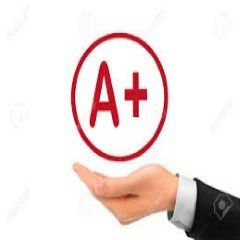
Online Users
-
 Askwilliam
Today
Askwilliam
Today
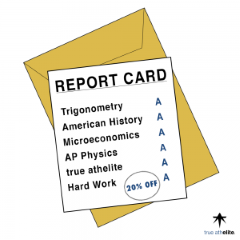

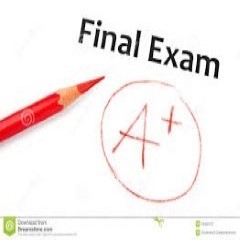
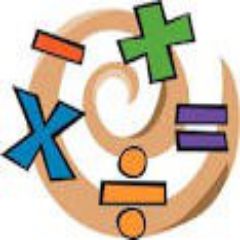
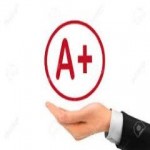
A+ - Thank you!
Thanks for the positive feedback!